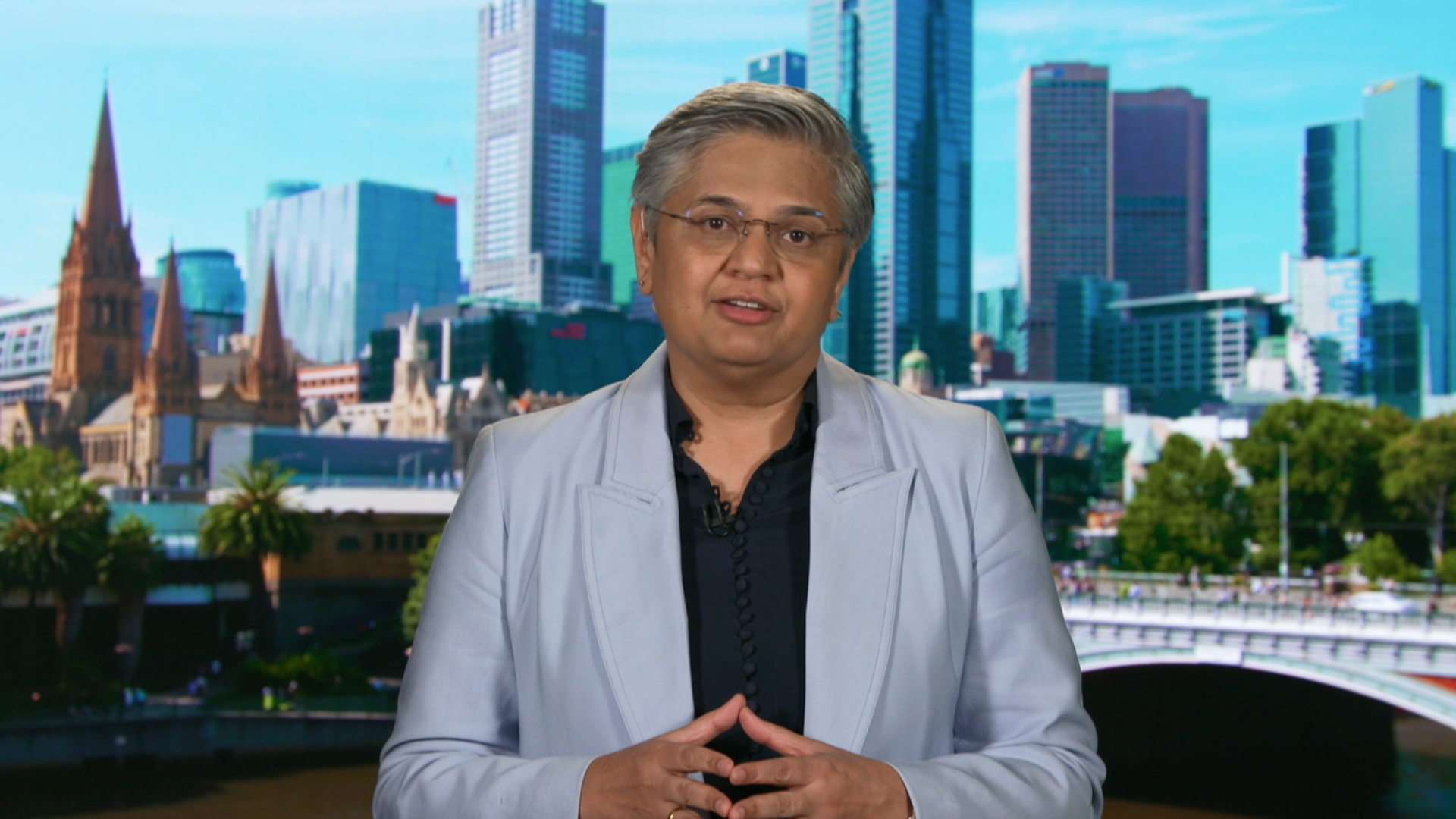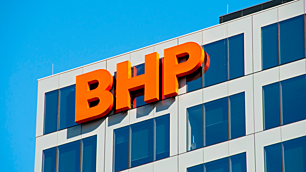BHP's latest numbers belie a strong growth pipeline
This interview was filmed Tuesday 18 February 2025.
For companies and management teams, there is often a fine balance between paying dividends now and investing for the future. BHP's recent results are a perfect case in point.
The blockbuster dividends of the past few years have seen BHP rise to be a highly sought-after income pick, even reaching as high as $4.60/share in 2022. Yesterday’s announcement of US$0.50/share might frighten some – but should it?
Many of you would have seen the headlines about the lowest dividend in eight years but this belies the fact that the company now has a strong forward pipeline of opportunities - particularly in copper.
Vandita Pant, Chief Financial Officer for BHP, acknowledges how important dividends are to long-term investors in BHP.
“The policy has a minimum 50% dividend and then excess cash competes with everything. In good times, you get even higher,” she says, noting that BHP has actually returned $US83 billion in cash returns since establishing the 50% minimum policy in 2016.
But she reminds investors that investing for the future is a safeguard and critical for long-term shareholder returns.
“We want to invest in the right kind of attractive opportunities for growth as well, so that returns can continue to accrue for our shareholders. And that is exactly what we are doing in copper, in potash, and even in iron ore, with the low-intensity capital returns,” Pant says.
Big investments in copper and potash
Copper and potash are central parts of BHP’s strategy going forward. The Big Australian invested over $7bn last year and there are projections it will spend up to $14.7bn within 10 years on its Escondida Mine and Spence operation alone to extract more copper.
Pant suggests this focus is already starting to pay off, copper now represents 39% of EBITDA.
“We hold the largest [copper] resources in the world and to June, we would have delivered 24% volume growth of copper in just the last three years,” Pant says.
She explains BHP intends to double copper production by the middle of the next decade in South Australia, along with looking at projects in Chile, Argentina, and the US.
Separately, the Janssen One project focused on potash is 63% completed and will come on line for its first production at the end of calendar year 2026.
“When that comes into production, over a period of time, it will be among the lowest cost producers of potash. It’s a multi-decade life asset, which will be a fantastic cash generator for our shareholders for times to come,” she says.
Operating in volatile times
BHP has been operating in a tougher market, with iron ore and copper prices hit over the last year. It’s no surprise that this hit revenue for the first half of FY25 and investors may wonder what the increasing risks in the global environment, like trade tariffs, will mean for BHP.
Pant comments that the trade tariffs should have minimal impact on BHP, given that the US represents 3-4% of its revenue, though the policies do more broadly impact global growth.
She believes BHP is well positioned for greater uncertainty and volatility across the world.
“That’s because we are in the right commodities at the lowest end of the cost curve, make high margins on our businesses, have a strong resilient balance sheet, and we are able to pull that together.”

Check out CommSec's analysis of the BHP results below

Edited transcript
What two numbers do you think are most interesting from BHP’s latest report?
One is Western Australia, the iron ore lowest cost number, which is one of my favourite ones because it shows for the fifth year in a row, we are the leading iron ore business in the world and this is fantastic for us because it's such a big business for us.
The second number, I will pick for you is 39%, which is the contribution of copper to EBITDA this half. Why is that important? It shows, as per our strategy of continuing to take more exposure and have more copper future facing commodities in our portfolio, that is exactly what is coming through in these results. 39% of EBITDA is coming from copper, which is a very attractive commodity with a positive demand supply outlook, as well as price outlook in long term.
These two numbers tell the story of the portfolio with a fantastic iron ore business and copper business. And, of course, we have potash coming into the portfolio with the first production in the next calendar year, and a great high quality met coal business in Queensland.
Iron ore remains a cornerstone of BHP. What are you focusing on for this segment for the future, be it new projects or new efficiencies?
The Western Australian iron ore business has really proven how our competitive advantage of operational excellence and what we call ‘the BHP operating system’ comes through by improving the business on an everyday basis by the team there. That is leading to, as I said, the lowest cost production number across the industry globally. Equally, we have been able to make in the last financial year, $8 more free cashflow by every tonne of iron ore in that business compared to the nearest Pilbara competitor. It’s a fantastic business but we are not standing still.
In fact, we have just completed some of the debottlenecking projects in Port Headland and that resulted in enabling a record first half shipments 4 billion, which is fantastic. Going forward, we have growth plans to creep up to 305 million tonnes of production in iron ore with very little capital intensity. These are good cheap tonnes to bring online and which we will do in the medium term by FY28 and beyond. That gives us a fantastic business, which is also growing in a very capital efficient way.
You are also expanding your focus in other areas like copper and potash. Can you share an update on this?
On potash, we have the Janssen One project which is 63% complete now in Canada and will come on stream for first production at the end of calendar year 26. When that comes in production, it will be, over a period of time, among the lowest cost producers in potash. It’s a multi-decade life asset which will be a fantastic cash generator for our shareholders for times to come, for many times to come. After that, we have Janssen Two as well. There’s growth coming in and that cash will start to flow in given it will be a low cost producer of potash.
On the other hand, copper has been an increasing and growing exposure within our portfolio. We are already the first or second largest copper producer in the world. We hold the largest resources in the world and to June this year, we would have delivered 24% volume growth in copper in just the last three years. But, this is just the start because we are looking at huge growth options for copper in our portfolio here in Australia, in South Australia, where we are looking to double the copper production by the middle of the next decade as well as in Chine, in Argentina and in the US. All these projects in copper are highly attractive return projects, and hence we are adding to the strength of copper in our portfolio even more.
Investors in BHP in recent years have earnt very healthy dividends. Today you’ve announced the lowest figure in 8 years, but you are also investing heavily in future opportunities. How do you balance these opportunities with shareholder returns?
Our capital allocation framework policy, which was put in place around the 8 years back, allows us to do that every six months.
We know how important dividends are to our investors who invest in BHP for a very long term basis, and hence the policy has a minimum 50% dividend and then excess cash competes with everything. And in good times you get even higher.
But if I were to say what our track record on dividends is, since that policy was put in place, we have returned US$83 billion dollars in cash returns to our investors, which is fantastic. But equally, we are a long-term company and on behalf of our shareholders, we want to invest in the right kind of attractive opportunities for growth as well so that the returns can continue to accrue to our shareholders. And that is exactly what we are doing in copper, in potash, and as I said, even in iron ore with the low intensity capital returns.
But, we are very clear that we know how important dividends are to our shareholders and hence have the policy of a minimum 50% of the profits we may make coming back to our shareholders every six months.
Much of BHP’s marketing discusses how the company is helping drive the world’s energy transition. How is BHP itself moving towards a zero-carbon future?
We have a medium-term target of 30% reduction in our carbon emission footprint by 2030, and we will have ups and downs, but we are very confident of being able to achieve that and we are committed to it.
While that is happening, I should also point out that there is a big uncertainty around technology for our haul trucks, for big trucks that go around in our mines. The path for designing, commercialising and being available from the original equipment manufacturers of those trucks is really one of those key milestones for changing that fleet. So that's something that we are partnering on with them and watching very closely, but we are confident that we will be on track and continue to be committed to 30% reduction in our carbon emissions by 2030.
There’s a lot going on in the world, between geopolitical risks and trade tensions. How do you anticipate this affecting BHP’s global supply chain going forward and what adjustments might the business be considering to navigate these?
As you said, there is a lot going on in the world and it is really fluid in the way it continues to evolve. But, I would say if I were to step back and ask what’s the direct impact on BHP of the tariffs and the policies which are currently on the table, I would say the impact is minimal. Not more than 3-4% of our revenue comes from the US, so that is quite a big mitigant. The US and its policies on trade do impact the overall global growth in the world, and hence we are watching that very carefully as you would imagine.
Equally I would say, this is not a base scenario, but if the world does become more volatile and more uncertain, BHP’s strategy and its execution holds us in really good stead. We can weather than kind of challenge better than anyone else. That’s because we are in the right commodities at the lowest end of the cost curve, make high margins on our businesses, have a strong resilient balance sheet, and we are able to pull that all together. BHP is a great place to be in a challenging world, but also, of course, is fantastic when the world growth continues to be solid.
Is there anything you'd like investors to keep your mind going forward?
Whatever is happening in the external world, BHP’s strategy of operational execution, really driving our projects well, running great assets in the best commodities very well means we are able to balance through our strategy, attractive shareholder returns and attractive growth options in businesses and commodities we like.
These are iron ore, a great business, and future facing commodities, like copper and potash, with a high performing Queensland metallurgical coal business as well.
3 topics


